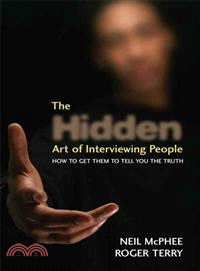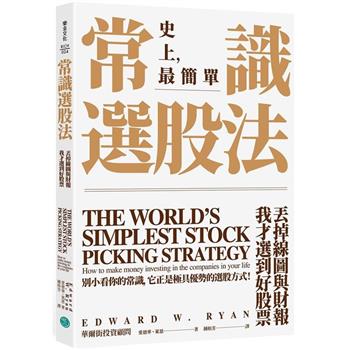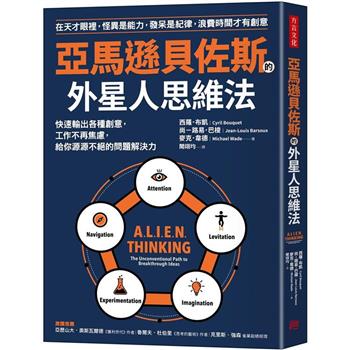| FindBook |
有 1 項符合
THE HIDDEN ART OF INTERVIEWING PEOPLE的圖書 |
 |
THE HIDDEN ART OF INTERVIEWING PEOPLE 作者:NEIL MCPHEE / 譯者:ROBERT TERRY 出版社:JOHN WILEY & SONS,LTD 出版日期:2007-04-13 規格: / 精裝 / 384頁 |
| 圖書館借閱 |
| 國家圖書館 | 全國圖書書目資訊網 | 國立公共資訊圖書館 | 電子書服務平台 | MetaCat 跨館整合查詢 |
| 臺北市立圖書館 | 新北市立圖書館 | 基隆市公共圖書館 | 桃園市立圖書館 | 新竹縣公共圖書館 |
| 苗栗縣立圖書館 | 臺中市立圖書館 | 彰化縣公共圖書館 | 南投縣文化局 | 雲林縣公共圖書館 |
| 嘉義縣圖書館 | 臺南市立圖書館 | 高雄市立圖書館 | 屏東縣公共圖書館 | 宜蘭縣公共圖書館 |
| 花蓮縣文化局 | 臺東縣文化處 |
|
|
- 圖書簡介
There is growing interest in the use of Neuro Linguistic Programming (NLP) as a Qualitative Market Research technique. NLP was previously used in psychology to understand how people think and react, and as a tool in self-development, interpersonal skills and business, looking at how our brains think and experience the world.
Qualitative Market research experts now see that using NLP can help the researchers understand the human brain and, armed with this power, they can find out the truth from interviewees. The Hidden Art of Interviewing People shows how, by using NLP and related techniques in interviews, the market researcher can see beyond the obvious to the truth. - 作者簡介
Neil McPhee is a long-time qualitative researcher, who began his career in 1972. Having been told by his boss, in his first week's employment in research, to go and help out with some interviewing (of retired people, applying for old-age bus concession passes), he discovered his probable incompatibility with structure by omitting to fill out any questionnaires at all. Some 25 years ago, Neil was introduced to new thinking at a presentation on Nonverbal Communication and Body Language. He became sold on the possible applications and the subject in general. Soon after that, Neil discovered NLP. There was little turning back after that. You cannot unlearn something so potent and pretend that none of it existed. Since then, Neil has variously bought, run and sold his own full-service agency and worked as Qualitative Research Director for an American-owned agency. He now offers his services as a Qualitative/Ethnography Practitioner and Consultant, both in the UK and internationally. Neil trained in NLP/Hypnotherapy with Roger Terry.
Roger Terry is a scientist with over 25 years' experience in running and building successful businesses. Ten years ago, he founded Evolution Training with his partner Emily, and he now works with businesses and individuals, guiding them to evolve to their full potential. Previously, his career was within the utility sector, where he was responsible for new business creation and innovative business development. An international NLP Master Trainer, hypnosis instructor and expert on human value systems, Roger leads seminars and consults with companies on executive teams in the UK, USA, Europe and the Middle East. His expertise in cultural change has helped businesses revitalise their organisations and people, bringing their cultures in line with the business strategy required to produce profit and growth. With a talent for using Neuro-Linguistic Programming and personal development techniques, Roger has a pragmatic and practical style. His enthusiastic and forthright approach to coaching, with a focused Neuro-Linguistic Programming methodology, provides a unique intervention approach that allows a client to achieve the maximum movement in their chosen direction for minimum effort. - 目次
FOREWORD.
ACKNOWLEDGEMENTS.
ABOUT THE AUTHORS.
INTRODUCTION.
1 TAKING THE BRIEF.
What’s in this chapter?
The importance of the fi rst steps.
Being at your best.
The dance of communication.
Reading the signposts.
True listening.
Quality questions.
Eliciting values.
Setting the scene – NLP frames.
Checklist for taking the brief.
2 RESPONDING TO THE BRIEF.
What’s in this chapter?
What’s the point of writing a proposal?
Proposal or action plan?
The power of words.
Using values to enhance the action plan.
Document style and construction.
Thinking like the client.
Action plan writing guidelines.
3 THE SAMPLE.
What’s in this chapter?
Recruitment.
Characteristics.
VAK subquotas.
Recruitment approaches.
4 RESEARCH INTERVIEWS.
What’s in this chapter?
Overview.
How we create our reality.
How does the process of fi lters and communication work?
Reframing.
Envirometics.
Rapport.
Role.
The topic guide.
Handling individuals.
Animating the group.
Groups vs depths.
Projective and enabling techniques.
5 UNDERSTANDING WHY PEOPLE BEHAVE THE WAY THEY DO.
What’s in this chapter?
Understanding people.
The fi ve sensory fi lters.
Eye accessing cues.
Primary interest or focus of attention.
Global–specifi c: chunk size.
Relational sort for decision: sameness–difference (matching–mismatching).
Motivating attention fi lters.
Options–procedures.
Time sort: past, present, future.
Decision-making.
Usage.
6 THE ANALYSIS.
What’s in this chapter?
To analyse or not to analyse?
One way of working.
Recording the interview.
Analysis.
How do we elicit this information?
Summary.
7 PRESENTING YOUR FINDINGS.
What’s in this chapter?
Putting it all together.
The presentation process.
Videoconferencing.
8 ETHICS, ECOLOGY AND CODES OF PRACTICE.
What’s in this chapter?
What do we mean by ecology?
Manipulation.
Ecology: NLP style.
Ethics and qualifi cations.
Codes of practice.
9 CONVERSATION PIECES.
GLOSSARY.
REFERENCES.
INDEX.
零的代價:中國在新冠疫情期間和其後的政策失誤
江恩角度K線:華爾街交易成功率90%的投資傳奇,用166張K線圖教你看出支撐與壓力,抓住波段買賣點,暴賺5000萬美元!(熱銷再版)
會計學歷年試題+模擬考
會計學完全攻略
自由選擇背後的行為賽局:讀哪間學校、跟誰結婚、是否生小孩、想與誰為鄰……諾貝爾經濟學獎得主教你繞開從眾偏誤,在人生關鍵時刻做出最佳決定
第1名業務養成術:成為業務神人的10大關鍵
別再看股價了!:每次查看股市都賠錢?最簡單的投資策略,每年交易4次就能選中贏家!
不動用武器的戰爭:資源、貿易、數據,交織全球經濟大戰略
5年從零到500萬的理想生活:5千元就能開始!克服月光和漏財,不壓抑需求也讓資產成長有感
|











